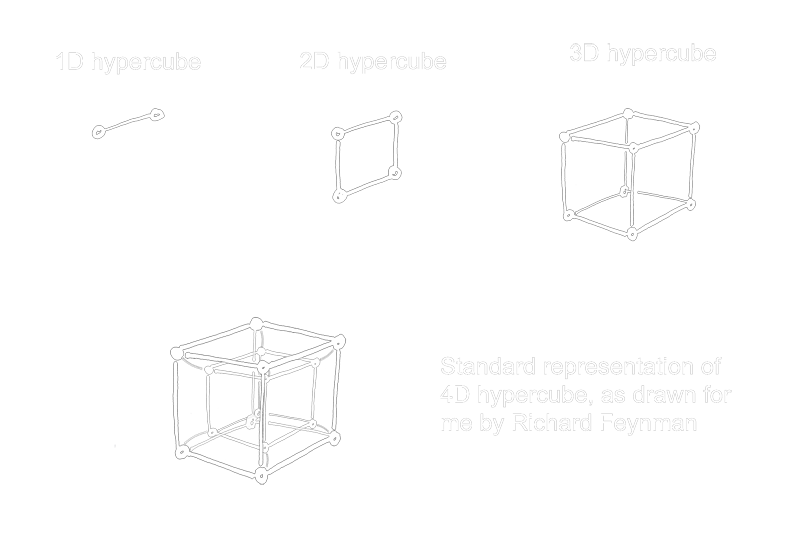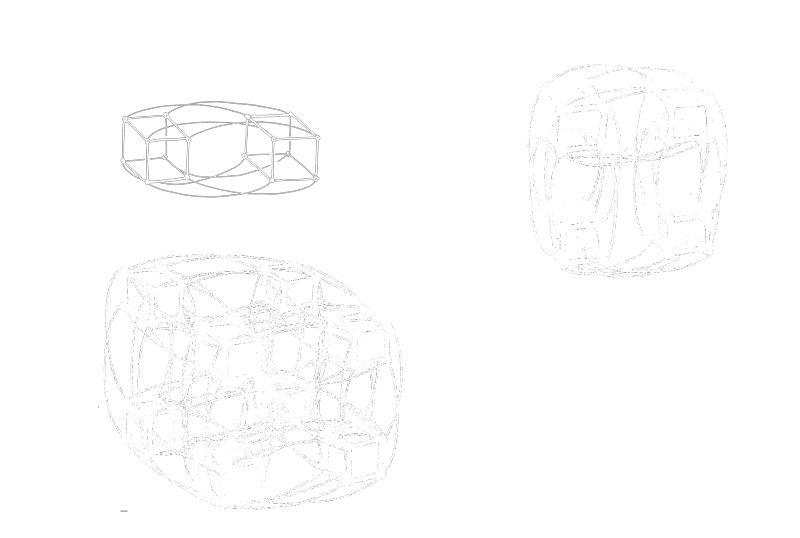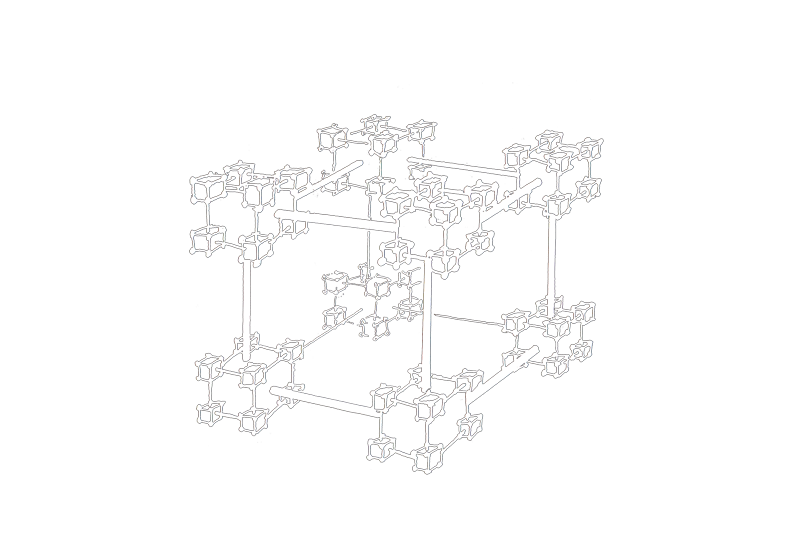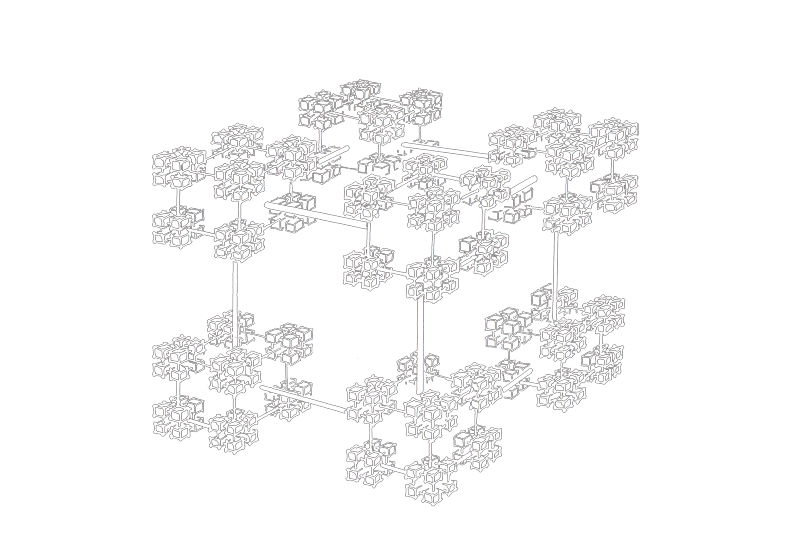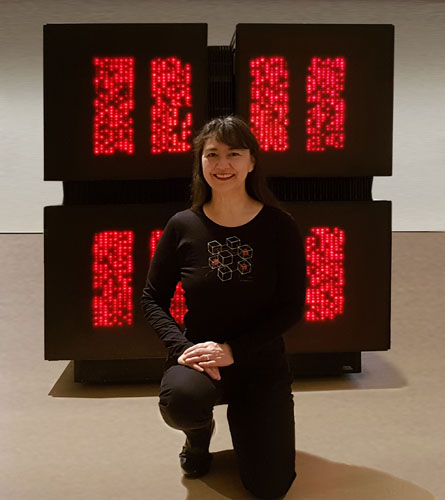12D Hypercube - the internal network of the CM-1/CM-2
|
Danny described the Connection Machine as 65,536 processors spread over 4,096 VLSI integrated circuit chips, connected together in an internal network with the structure of a 12-dimensional Boolean hypercube to enable fast communications between all processor chips. Well, I had to wire it together, and to be able to do that, I needed to understand this 12-dimensional Boolean hypercube very exactly.
| |
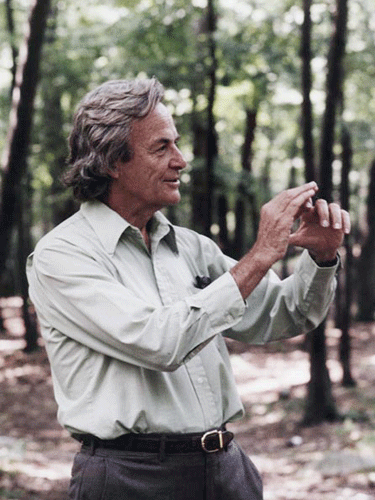 |
"Go talk to Richard Feynman, it's his idea!" said Danny. Richard, who was awarded a Nobel prize for quantum chromodynamics, was a professor at CalTech, but spent his summers with us for fun. His answer was classic Feynman: "Oh, that's EASY!" he said, and promptly starting drawing diagrams. "Each chip has 16 processors. Join 2 chips with a wire to make a 1D hypercube. Duplicate that structure and connect the ends - you get a 2D hypercube, which we usually call a square. Each chip has two direct connections, and the longest path across the network is two steps. Duplicate that structure and connect the ends - you get a 3D hypercube, which we usually call a cube. Now for the 4D it gets complicated: duplicate the 3D cube and connect the ends - you get a 4D hypercube, a cube inside a cube. Beyond that it gets really difficult to draw." |
|
Great, but I still had to figure out how to wire all 12 dimensions ...
| |
So I went off and played around with the Boolean hypercube concept, trying to figure out how to depict the higher dimensions in a more understandable way. I tried placing the successive cubes side by side, instead within each other, as they were typically drawn. Ahah! Drawn this way, instead of the huge snarl of wires you get when you draw boxes within boxes, a repeating pattern began to appear: the line/square/cube structures repeated themselves every 3 dimensions.
|
|
|
|
|
It was still tremendously difficult to draw the individual wires for higher and higher dimensions. So I introduced a symbolic leap, drawing the ever higher connections as "meta-wires" - not as pretty, but easier to understand:
|
|
|
|
|
From then on it was very easy to go first to 9 dimensions:
|
|
|
|
|
... and then to 12 dimensions, the size of the actual internal network of both the Connection Machine CM-1 and also the CM-2:
|
|
|
|
|
This became the CM-1 logo for our first t-shirt:
(See the CM-1 t-shirt page to understand why it is nicknamed the "Feynman" t-shirt!)
|
|
|
|
|
... and the t-shirt in turn became the inspiration to actually build the Connection Machine itself into an 8-fold cube-of-cubes form, with the processor chips status lights showing through the translucent doors, blinking as they communicated via the 12-dimensional hypercube. (See my article The Design of the Connection Machine for the full story.)
|
|
|
|
|
